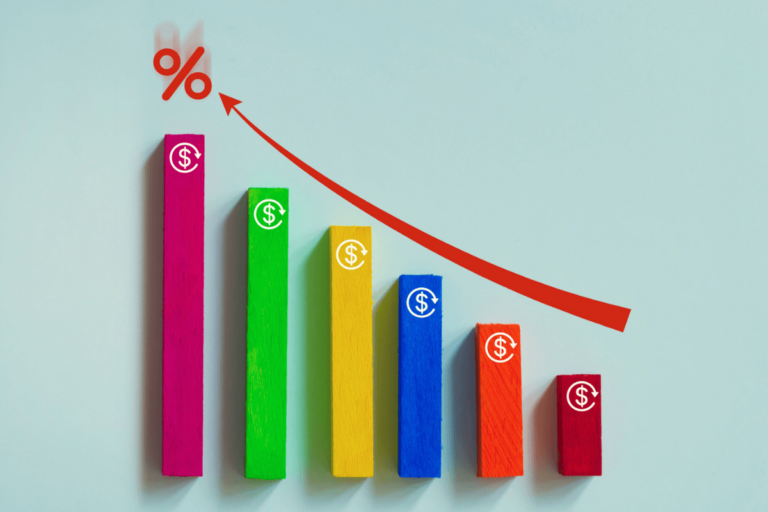What is Frugality + How It Can Help You Achieve Your Big Goals

After New Year’s Day, people work to make new goals stick and turn them into productive habits. Maybe you made some financial resolutions at the beginning of the year, or perhaps you wish you had. Either way, adding some frugality to your life can put you on firmer financial footing at the start of any year!
What is frugality?
According to Meriam-Webster, the frugality definition is the careful management of the resources available and especially money. This definition doesn’t necessarily mean being cheap.
Living a frugal lifestyle is much more than buying the most affordable possible option. Frugality is an attitude and a mindset of saving more and spending less, and achieving value when you pay and plan for the future.
Planning for the future
The first step for adding frugality to your life is to have a plan. As George Harrison said, “If you don’t know where you are going, any road will get you there.”
When it comes to finances, the most basic plan is a budget. You need to know how much money you have and then make a plan for what you’re going to do with it.
If budgeting is new to you, then here are a couple of tips for getting started and a few traps to watch out for as well.
Budget Tips
Budget Tip 1: Review your expenses.
To know where you’re going, it helps to know where you’ve been. Start by reviewing where all your money has gone for the last few months and making categories to make it easier to set up your budget.
Here are some categories I like to use but feel free to make your own or add in subcategories:
- Essentials – food, shelter, vehicle expenses, and the associated insurance and taxes go here.
- Security – debt reduction, retirement savings, etc.
- Goals – savings towards specific future purchases you would like to make.
- Lifestyle – items essential to your everyday life, but that don’t fall into the Essentials category.
- Discretionary– generally the fun stuff and the extras – if it doesn’t go anywhere else, it probably goes here.
Budget Tip 2: Make a plan.
Once you tally up all your past expenses, make a plan for each category for the next month.
If you want to boost the amount you’re putting towards the Goals category, the easiest way is to look at cutting back on something in the Discretionary or Lifestyle categories. Just remember, you are in charge of the budget, so set it up, so it works for you!
Budget Traps
Budget Trap 1: Predicting the Future
I used to think budgeting was about predicting the future – matching future income and expenses to each other. However, I have learned that a successful budget is not a guess at what to do with the money you might have later.
Instead, it’s a plan for the money you already have, so no divination is required! Once you have a budget in place, you have a template for what to do when a new paycheck shows up, and the budgeting process becomes much more straightforward.
Budget Trap 2: Category Confusion
Don’t worry if an expense fits squarely with the category label! The main thing is to track the expenses, so you know where the money is going.
Careful management of your money is the basics of personal finance, which can lead to financial independence!
Budget Trap #3: Giving Up
Sometimes expenses for a particular category exceed what you planned, and there’s no getting around it. This hurdle can make you feel like giving up, but don’t do it!
A budget is a tracking and planning tool, so it might take a few iterations to smooth out. In the meantime, just shift some funds from other categories to get things balanced and then move forward with the new information.
For some additional information and tools to get started making a budget, check out my article “Do I Need a Budget?”
Saving More and Spending Less
When it comes to frugality, spending less is what usually comes to mind first. This mindset is great because it allows you to save money for the things you want to do and increase your financial freedom and security. Here are a few ideas to get you started saving every way you can.
Spend Less Money
Reduce Discretionary Spending
Take a look at your budget.
How much are you spending on discretionary items each month? Are there any tweaks you can make to stop spending money and put a few extra dollars in your pocket? You can be as frugal as spending only $10.
Maybe you could pack a lunch a couple of days a week instead of eating out every day, or buy a 12-pack of soda and a box of granola bars instead of hitting the vending machine.
You might even consider dropping one of those five streaming services for a couple of months – after all, how much TV can you watch at once? Or, you can save up your tax refund versus spending it.
Small changes like these can quickly add up to hundreds of dollars over a few months.
Avoid Credit Card Interest
If you’re carrying credit card debt, your consumer spending costs a lot more than you think. Many credit cards are charging an interest rate of 20% or more!
Do you want to pay a 20% mark-up on anything?
Don’t throw away your money and make a plan to get out from under the crushing weight of credit card debt. Start paying only in cash if you have to – and never carry a balance on your credit cards again.
Find a discount
If you need to spend money, there is almost always a way to get a purchase discount. Depending on what it is, you might have to ask for it or shop around, but it’s probably out there, such as free perfume samples. I recommend checking local thrift stores for other opportunities.
One of my favorite ways to get discounts is to use rebate apps – the deals are right there on your phone and simple to use. Every year in the United States, many people are also clipping coupons to buy something at a discount!
Save More Money
Start an emergency fund.
A CNBC report said only 41% of Americans could cover a $1000 emergency with savings. If you’re part of the 59% percent who can’t, make it a priority to start an emergency fund as soon as possible!
The last thing you want to worry about if there’s a trip to the emergency room or your car needs a major repair. Once your fund hits that $1000 mark, pat yourself on the back and set a new goal!
Eventually, you want the emergency fund to cover 3-6 months of expenses as a layer of protection should you lose your income. It might take some time to build that amount up, depending on your level of extreme frugality.
Plan for Retirement
No one wants to work forever, so start planning and saving now. Your employer’s 401k plan is a great place to start.
The 401k plan may even offer some additional free financial planning services. If not, look for a Certified Financial Planner in your area.
You can retire early with the right moves, find something you want to do, living frugally.
Starting a Side Hustle
If your day job isn’t paying enough to help you store up money, consider starting a side hustle. There are a couple of ways you can generate passive income, such as real estate investing. You can technically get started with “no money” to acquire your first rental property!
Dream goals.
Saving can seem like such a stuffy exercise, but it doesn’t have to be! Set some fun goals too.
My family loves to travel, and we love to find ways to scratch out a few extra dollars and plop them into a vacation savings account.
Do you have a dream vacation, a thing for classic cars, or a new hobby that requires a little upfront investment? Set a Dream Goal and then set to work, making that dream come true! Also look for travel deals, like weekly rate hotels.
Achieving Value
The ultimate in frugality is achieving value! Let me give an example.
Furniture shopping is a notoriously trying task for many couples, not only because of the tastes and aesthetics involved but also because furniture is expensive.
Several years ago, my wife and I knew it was time for new couches for the living room. We set a budget and did some shopping around at various retailers across the city. Still, we finally found what we were looking from at a warehouse-sized retailer, and it was here where frugality came into play!
The friendly salesperson let us know they had a range of prices and quality, from “break the bank/your children will inherit this” to “low cost/your children will destroy this quickly.” Those weren’t his exact words, but pretty close.
We ended up settling on something that was toward the middle of both ranges – affordable and durable. Eight years later, we survived the toddler years, and we’re still quite happy with that purchase.
There’s an advantage to achieving value in large purchases, but you can gain value in small purchases too. You can spend as low as $10 being frugal!
Additionally, the grocery store is a great place to practice this skill. You can save money in the long run with proper meal planning to avoid waste.
Can you tell the difference between name brand and generic pasta after someone covers it in a sauce? What about breakfast cereal or pantry staples like flour and sugar?
Often the trade-offs are merely on name recognition and have nothing to do with quality, but you still pay less. Value achieved!
Conclusion
A frugality mindset can permeate your entire life and help you spend less, save more, achieve value, and ultimately help you get the future you want. Although we don’t live in the Great Depression or World War II, that doesn’t mean you can’t live a frugal life.
Start small and see how it affects your daily life and your wallet. You can move up to being extremely frugal by avoiding waste at every opportunity. Consider buying a whole house fan, which is a great way to slash your A/C bill.
As you begin to see the positive results of frugal living, you will start incorporating it into more areas and be on your way to building real wealth.






